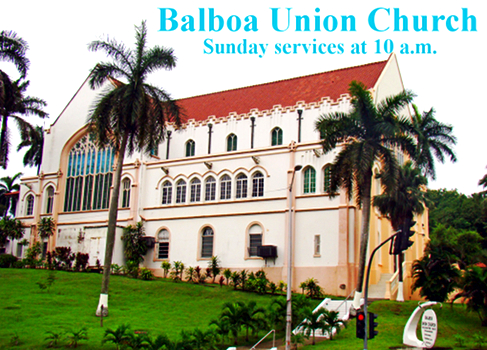
Why the FCC’s proposed internet rules may spell trouble ahead
by David Choffnes — Northeastern University
As the US Federal Communications Commission takes up a formal proposal to reverse the Obama-era Open Internet Order, a key question consumers and policymakers alike are asking is: What difference do these rules make?
My research team has been studying one key element of the regulations — called “throttling,” the practice of limiting download speeds — for several years, spanning a period both before the 2015 Open Internet Order was issued and after it took effect. Our findings reveal not only the state of internet openness before the Obama initiative but also the measurable results of the policy’s effect.
The methods we used and the tools we developed investigate how internet service providers manage your traffic and demonstrate how open the internet really is — or isn’t — as a result of evolving internet service plans, as well as political and regulatory changes. Regular people can explore their own services with our mobile app for Android, which is out now; an iOS version is coming soon. We’re working with the French equivalent of the FCC to promote our measurement tools in France to help audit whether French ISPs are compliant with local net neutrality protections. Other countries, including the United States, could follow the French lead, using our tools to evaluate their internet service quality.
Rules take effect
Before the Open Internet Order took effect in 2015, companies running cellular networks were allowed to use throttling to manage how much data their networks needed to handle at any given time. To do this, some companies capped users’ download speeds, which could cause video to stream at lower quality, with less-sharp images that were blurry during action sequences.
But there were limited rules governing how the mobile companies enforced those caps: We found some providers slowing down YouTube videos but not Netflix or other video services. This is an example of a major concern net neutrality supporters have: that internet providers might give preference to traffic from one site or another — perhaps making video providers pay extra to have their material delivered at high speed. If the speed or quality consumers can get from an online service depends on how much providers can afford to pay, that can put startups and innovators at a disadvantage to existing internet giants.
When it took effect, the Open Internet Order allowed internet providers to use throttling in only a limited way, under the so-called “reasonable network management” provision. Instead of singling out specific types of data for throttling, mobile companies — and wired internet providers as well — were required to do so in a way that treats all traffic equally. We observed the companies that had slowed down YouTube but not Netflix shifting their policies to reflect this new requirement.
The return of throttling
In late 2015, though, T-Mobile announced a program it called “Binge On,” departing from its competitors by offering its customers “free” video streaming — the ability to watch some video services on their devices without counting against monthly high-speed data limits. The trade-off was that their video quality from those providers would be limited in the best case to the equivalent of a regular DVD — not the high-definition video most people have come to expect, and which mobile data networks are capable of carrying. Some video sites would come in at higher quality, but their data would count against users’ monthly caps. Other sites’ videos, strangely enough, would come in at low quality, though the data would still count against users’ monthly caps.
When my team heard the announcement, we were perplexed. It seemed clear T-Mobile was throttling, perhaps even preferentially, choosing a handful of services to exempt from users’ monthly data caps, while continuing to count data from other video providers. And many users were opted in by default, potentially never knowing that T-Mobile had decided for them whether they could stream high-quality video. But most confounding, how did T-Mobile know what “video” was, as distinct from other data flowing through its networks?
What are ‘packets,’ and how do they travel around the internet?
Internet traffic is broken up into small chunks of data called “packets” that travel through the wires separately and then are reassembled by the computer or mobile device that’s receiving them. Think of these as small messages in individual envelopes traveling through the mail. In both cases, the packets and envelopes reach their destination according to the address written on the outside — not what is contained inside.
It would be strange if the US Postal Service looked at the envelopes, guessed what was inside, and decided your credit card bill should be delivered first, but delayed your paycheck. Unlike some envelopes, packets coming from YouTube or Spotify don’t carry information on the outside declaring what’s inside — say, “video” or “music streaming” or “web.” To the internet, they all look the same. And under the principles of net neutrality, they should all be treated the same.
Unequal handling
Through a set of rigorous experiments, we were able to find out how T-Mobile and other internet companies tried to tell the difference between video packets and packets containing other types of data: They were looking inside the packets — inside the envelopes — for particular words or terms, like “netflix.com” or “googlevideo.”
Someone had come up with a list of hints that indicated a particular piece of network traffic was in fact part of an online video. But of course there are countless video streaming platforms — and old ones die off and new ones are started every day. T-Mobile’s list couldn’t possibly cover them all.
We found that the popular video service Vimeo was not throttled by T-Mobile or Verizon. This meant that people who streamed Vimeo content used up some of their monthly data cap, but got better video quality than people watching YouTube or Netflix. This decision by T-Mobile — though it passed a review by the FCC — affected how well YouTube and Netflix could compete with Vimeo, which raises a specter of more problems to come if the FCC scraps the Open Internet Order (which, for all these reasons, I have urged them not to). What, for example, would stop AT&T from giving its DirecTV subsidiary faster and better-quality traffic than it gave competitors Netflix and Hulu?
Protecting consumers
One way to ensure users get the service they’re expecting — and paying for — is to require more transparency from internet providers. Specifically, they should disclose how much they slow down video and what that does to video quality, but also what hints or techniques they use to detect video traffic in the first place.
In addition, those methods must ensure that internet companies treat all content providers equally — so users don’t get better or worse performance from different sites based on corporate interests or disputes. And regulators need to enforce these basic rules, using auditing tools like the open-source ones my research team has developed.
![]() Editor’s note: This is an updated version of an article originally published Sept. 29, 2017.
Editor’s note: This is an updated version of an article originally published Sept. 29, 2017.
David Choffnes is and assistant professor of computer and information science at Northeastern University
This article was originally published on The Conversation. Read the original article.
~ ~ ~
These announcements are interactive. Click on them for more information.











